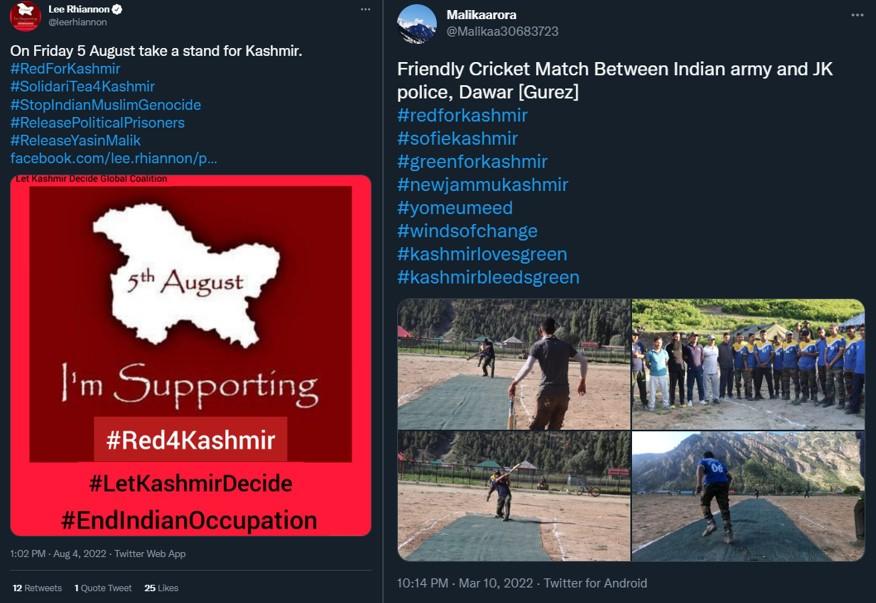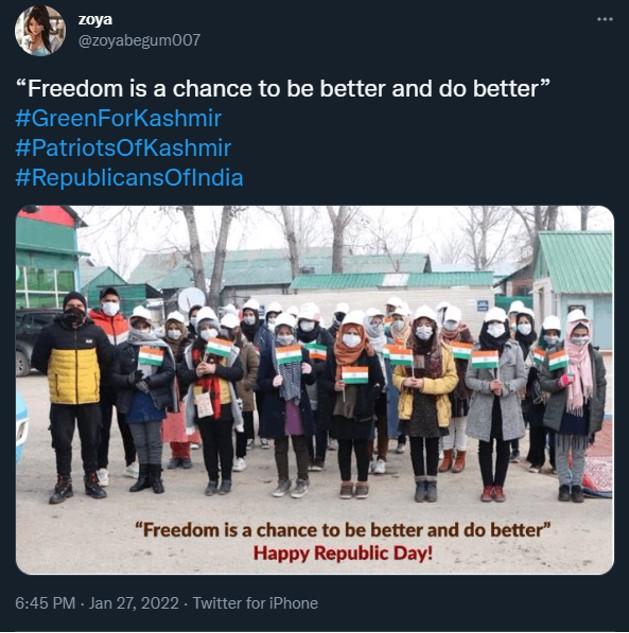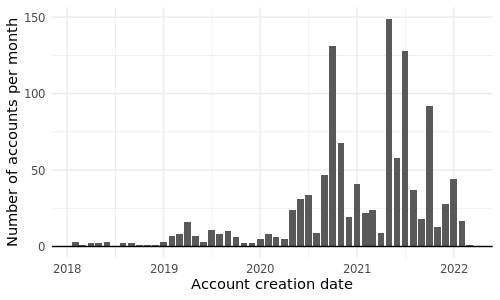
South Asian social media is now a contested space. Multiple politically motivated actors deploy inauthentic accounts to shape the discourse on the region’s historical and modern geopolitical disputes.
One of the region’s longest running disputes is over Kashmir. India and Pakistan have fought two wars and multiple smaller armed conflicts over the region. Multiple attempts at peace negotiations haven’t yielded results. Today, Kashmir is claimed by both India and Pakistan, but each state controls parts of the region, and China also controls territory ceded by Pakistan but claimed by India as part of Kashmir.
Present-day Kashmir remains highly militarised and experiences extraordinary levels of state control. In 2019, the region went through a fresh round of tensions, starting from the death of 40 Indian soldiers in an attack linked to a Pakistan-based terrorist group, which led to a cross-border strike by India and skirmishes between the Indian and Pakistani air forces. In August 2019, Indian Prime Minister Narendra Modi delivered on his party’s manifesto by removing the region’s constitutional privileges, which gave Kashmir a high degree of autonomy and divided the state into two federally controlled territories. That was followed by an internet and media blackout, an increased Indian Army presence and a strongly enforced ban on public gatherings.
These historical conflicts and the resulting domestic political motivations have now polluted the region’s social media and political discourse with coordinated activity aimed at hijacking or disrupting genuine debate, discussion and movement.
Since tensions flared between India and Pakistan in 2019, multiple suspicious and coordinated accounts have sought to shape narratives relating to Kashmir on social media platforms. Examples include two hashtags, #KashmirWithModi and #KashmirWelcomesChange, which were posted by legitimate Twitter users before being used by suspicious accounts to disseminate misleading content showing local Kashmiris reacting favourable to the Indian government. Around the same time, Twitter accounts—presumed to have originated from Pakistan—also amplified two competing hashtags, #IndiaUsingClusterBombs and #KashmirUnderThreat.
Meta has also identified coordinated inauthentic behaviour believed to have originated in India and Pakistan in April 2019, and has removed four networks from its Facebook platform.
Earlier this month, ASPI received a dataset from Twitter of 1,198 accounts that amplified content favourable to the Indian government and were suspended for breaching Twitter’s platform manipulation and spam policies. Activities that might constitute breaches include artificially amplifying or suppressing information, mass-registering accounts, and conducting coordinated operations to disrupt conversations. These behavioural indicators were used by Twitter to delineate between legitimate users and coordinated, well-resourced and politically motivated actors.
In this dataset, accounts sought to influence public opinion about Kashmir, Pakistan and the Indian Army, and to promote a positive view of the Indian government after the removal of Kashmir’s constitutional privileges. According to Twitter, these accounts are presumed to have been located in India and, surprisingly, the United States. Twitter also disclosed a separate network of 568 accounts and 4,418,374 tweets, presumably originating in Pakistan. Analysis of that dataset was outside the scope of this investigation.
This latest India/US-originated multi-year dataset contained more than 360,000 tweets and 107,600 media files posted mostly between June 2019 and January 2022. Tweets were posted mainly in English and Hindi, indicating that the operations likely targeted both South Asian and international audiences. The frequency of posts reached a relative peak in June 2019, but the majority were posted during the end of 2020 and the first half of 2021.
Number of tweets posted per month by top six most frequently used tweet languages

Analysis of the most frequently used hashtags in this multi-year campaign showed that tweets primarily targeted online discourse relating to Kashmir. For example, the hashtags #GreenForKashmir and #RedForKashmir were used in 5,496 and 2,268 tweets respectively in June and July 2021. The #RedForKashmir hashtag is part of a social media movement that originated in the US aimed at protesting the Indian government’s removal of Kashmir’s special constitutional status. Our analysis showed attempts to hijack this hashtag with innocuous tweets or tweets portraying the Indian Army in a positive manner.
For example, the screenshot on the left below shows a legitimate and verified account using the #RedForKashmir hashtag to criticise the Indian government, while the screenshot on the right is a tweet posted by an account that uses common hashtags and text positively depicting the Indian Army found in the suspended campaign.

Many accounts currently active on Twitter are likely part of this network—but appeared to have evaded Twitter suspension—and continue to co-opt the #RedForKashmir hashtag and amplify the #GreenForKashmir hashtag.
For example, a tweet posted by zoya (below) uses the same tweet text and hashtags as users suspended in this dataset.

Beyond Kashmir-related content, the operators of this network sought to shape public perception about other territorial or political disputes in South Asia.
This included content about Balochistan, Pakistan’s largest province, which has faced separatist movements and accusations of human rights abuses by the local authorities. The hashtag #Balochistan was used 3,625 times (making it the 11th most frequently used hashtag) in the context of tweets calling for Balochistan independence and undermining the Pakistan Army in the region. The second most retweeted account was the official Twitter account of Sher Mohammad Bugti, the central spokesman of the Baloch Republican Party, a banned organisation in Pakistan that seeks Baloch independence.
In another example relating to modern geopolitical tensions, accounts in this network also sought to counter perceptions about China. The most shared link (4,357 times) was an Indian news agency article about China facing an economic slowdown. Funding issues with the China–Pakistan Economic Corridor, a collection of major infrastructure projects in Pakistan that’s seen as the main plank of Beijing’s Belt and Road Initiative, were mentioned in 1,316 tweets.
Overall, accounts in this network deployed the usual tactics to artificially amplify information favourable to their political goals and maintain a sustained presence on Twitter. Of all the posts in the dataset, 30.1% were retweets and mostly sought to artificially amplify tweets that were favourable to the Indian government. Accounts were created constantly throughout 2019 to 2022. The majority were created after 2020. Only 29 accounts (2.4%) were created before 2018, and they are likely commercial spam accounts that were later repurposed for political activity.
Number of accounts created per month between January 2018 and March 2022

This sustained multi-year campaign is one of many examples of how South Asian social media is now overcrowded with politically motivated actors seeking to interfere in or disrupt online discourse on the region’s most important disputes. Tweets in this campaign mostly received low engagement from legitimate users, but the volume and veracity of tweets suggests an escalating and persistent campaign.
Larger questions about the implications of restricting the rights of citizens to participate in democratic discourse and undermining the use of social media platforms as tools in human rights movements are left unanswered. As the region becomes more contested, covert and coordinated activities like this operation could undermine norms of behaviour that are conducive to open democracies.